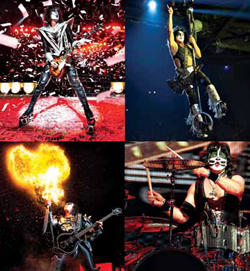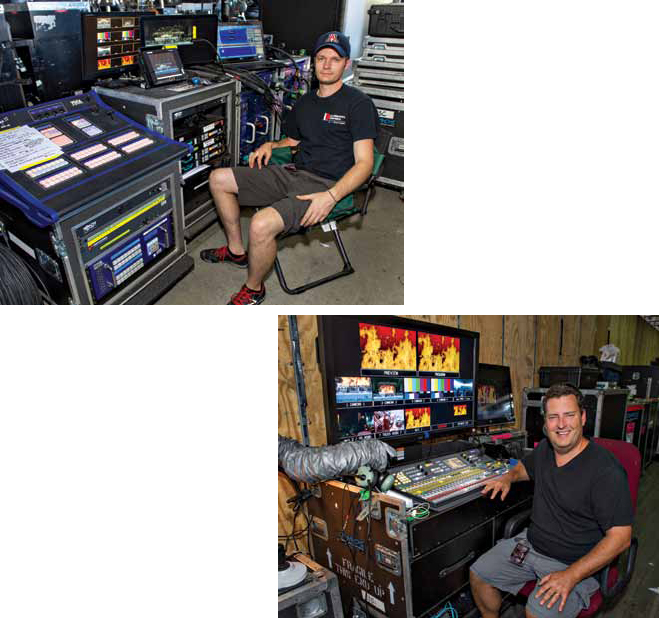
Despite being given his “Mötley” moniker based upon a Mötley Crüe t-shirt he wore that became an identifier early in his career, Hackett has been a KISS fan since the ‘70s, a fact that serves him well in his professional life today when it comes to balancing the band’s legacy and need to keep current.
“There are certain looks that have to remain classic,” he states with conviction. “Especially the fire breathing and blood spitting. As a fan myself I know what other fans expect to see. Many want to think they are at the shows they saw in the ‘70s, but now they don’t mind a little 21st century twist to things.
“KISS is an ever-evolving beast, and they are quick to provide me with input in terms of mixing it up or fixing things up a certain way. The fine line I walk pays homage to the past while bringing the show into the present without going to far.”
“Evolution was a fact of life on the Crüe side of the fence as well. “Up until now,” Cooper explains, “the Tommycoaster was always dead-center onstage. Due to design constraints imposed by the set—and I think general boredom—we decided to push it all the way stage left for this tour, adding to the asymmetrical mess that is Mötley Crüe.
“After a year-and-a-half, we’re still using the same base programming we did last summer, but it has been modified for about six touring rigs, a residency in Vegas at the Hard Rock, and a European festival/headliner tour. I think when we go back out next year we might re-program the show from scratch, just to freshen things up a bit.”
Playing To The Cameras
Working through Burbank’s Chaos Visual Productions, video director Kevin Carswell was a main figure in Video Village, which set up headquarters at each stop in a trailer usually relegated to far nether regions backstage.
Governing video and camera content appearing upstage on an Everbrighten BR-15 videowall measuring 60 feet wide by 25 feet high from behind his Grass Valley Kayak console, Carswell brought further visual reinforcement to the gathered crowds with Galaxia Winvision displays spanning the set, and outboard front projection screens using projectors from Christy.

There were four manned cameras feeding Carswell’s console. Two operators in the pit utilized Sony HXC-100s with Fujinon wide angle lenses, and two long-lens operators once again used Sony HXC-100s, only this time sporting Fujinon X72 lenses.
A Sony BRC-700 robo camera found its way into the truss every night, and as a final complement to the Tommycoaster spectacle, a pair of Toshiba IK-HD1H ice cube cameras provided the audience with Tommy Lee’s own POV looking out onto the crowd.
“Every show was different on this tour,” Carswell notes. “It was never ‘Groundhog Day.’ When you’re surrounded by experienced professionals like we had working these shows onstage and behind-the-scenes, the life of a video director couldn’t be better. The band members knew how to play the cameras, and the crew could take even the most demanding and chaotic moments and turn them into something compelling for the crowds.
“There was a lot more going on beyond the gags, fire, and smoke. These were nights where for a little while everyone could lose themselves in a bombardment of visual and sonic sensations, and come out the other end feeling a little bit better.”
